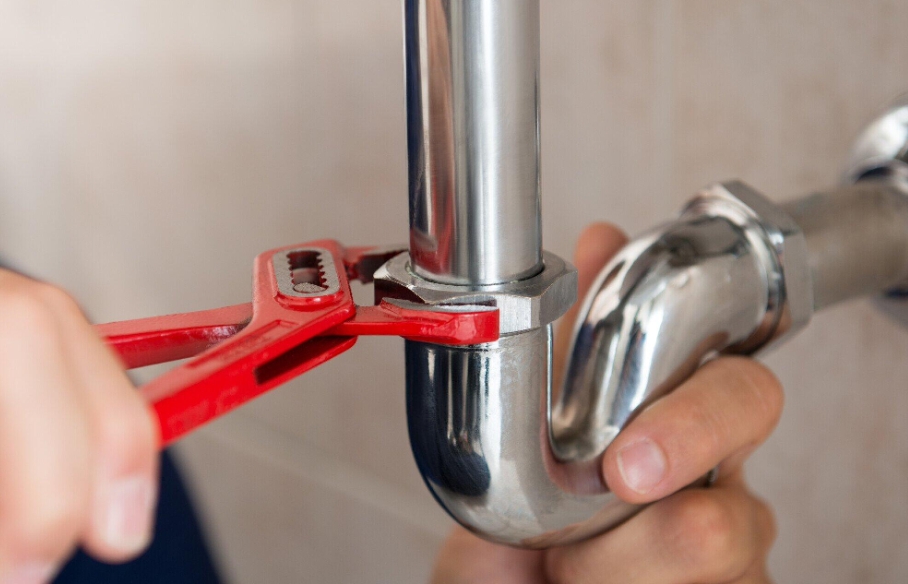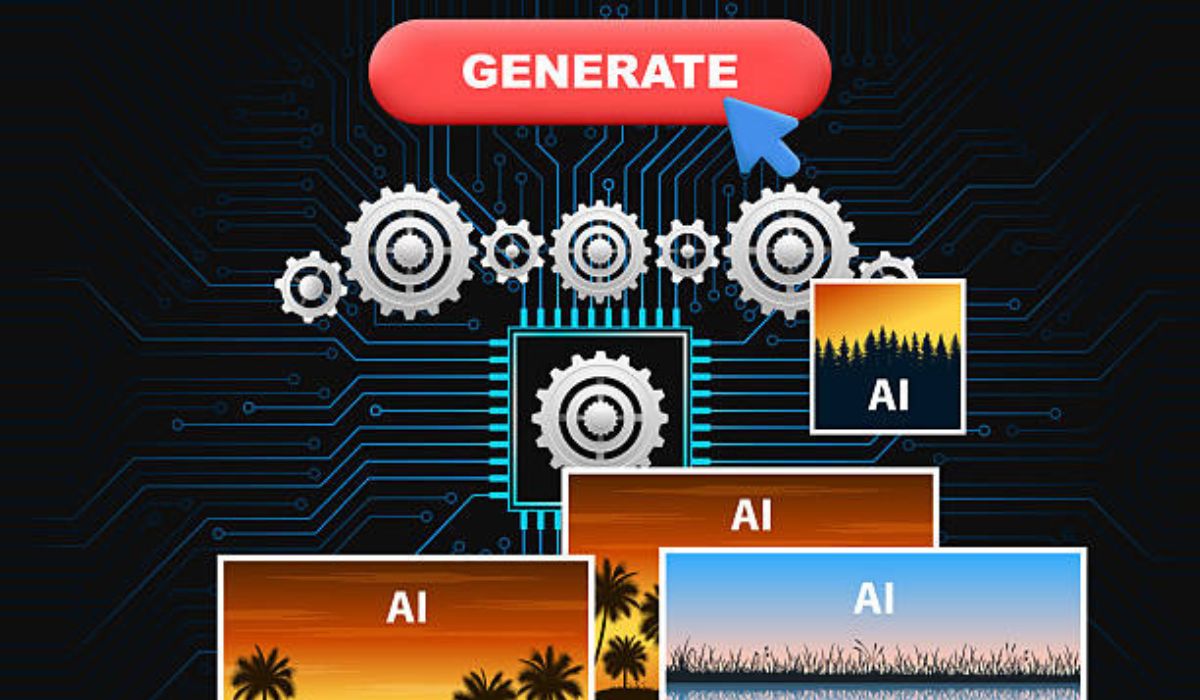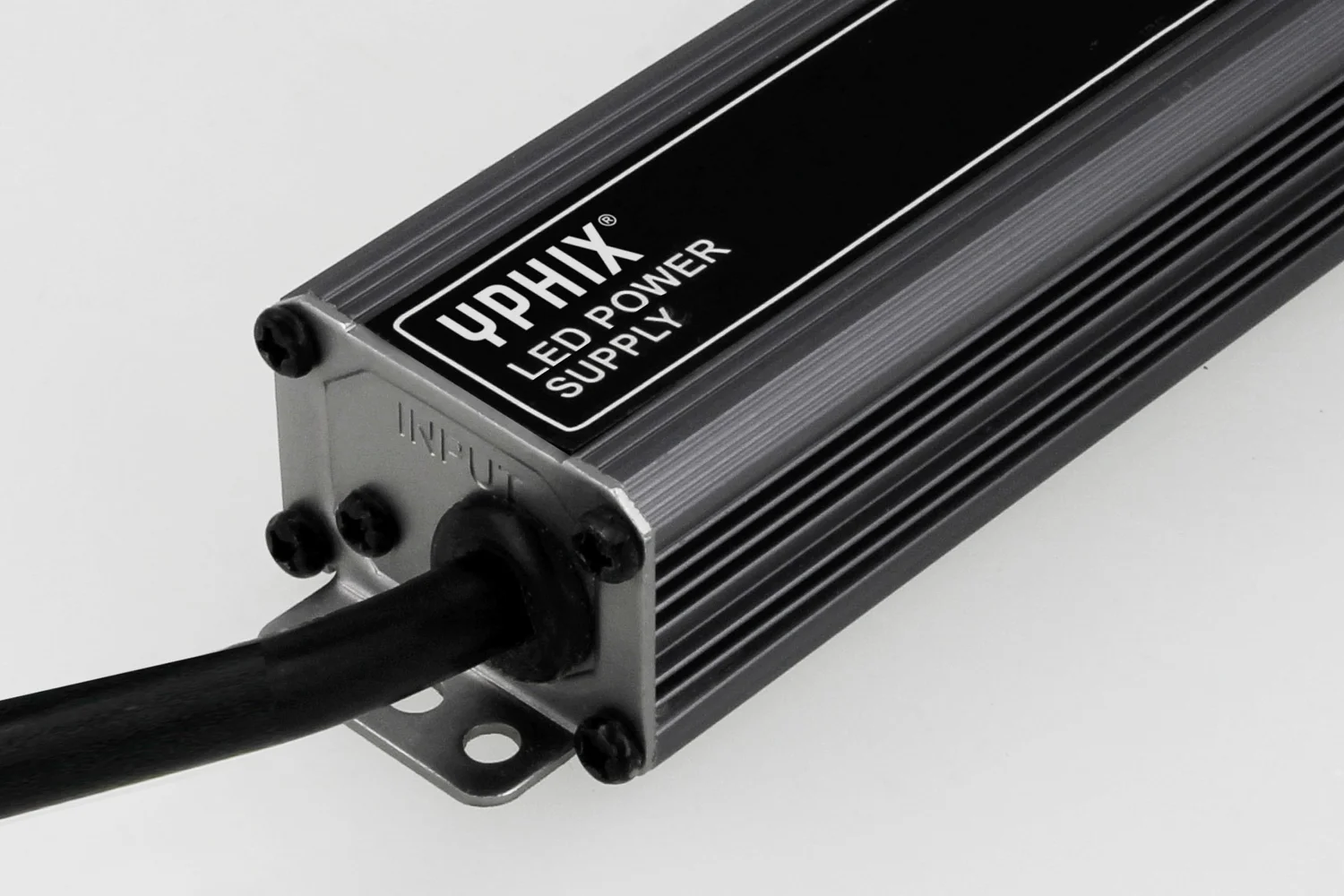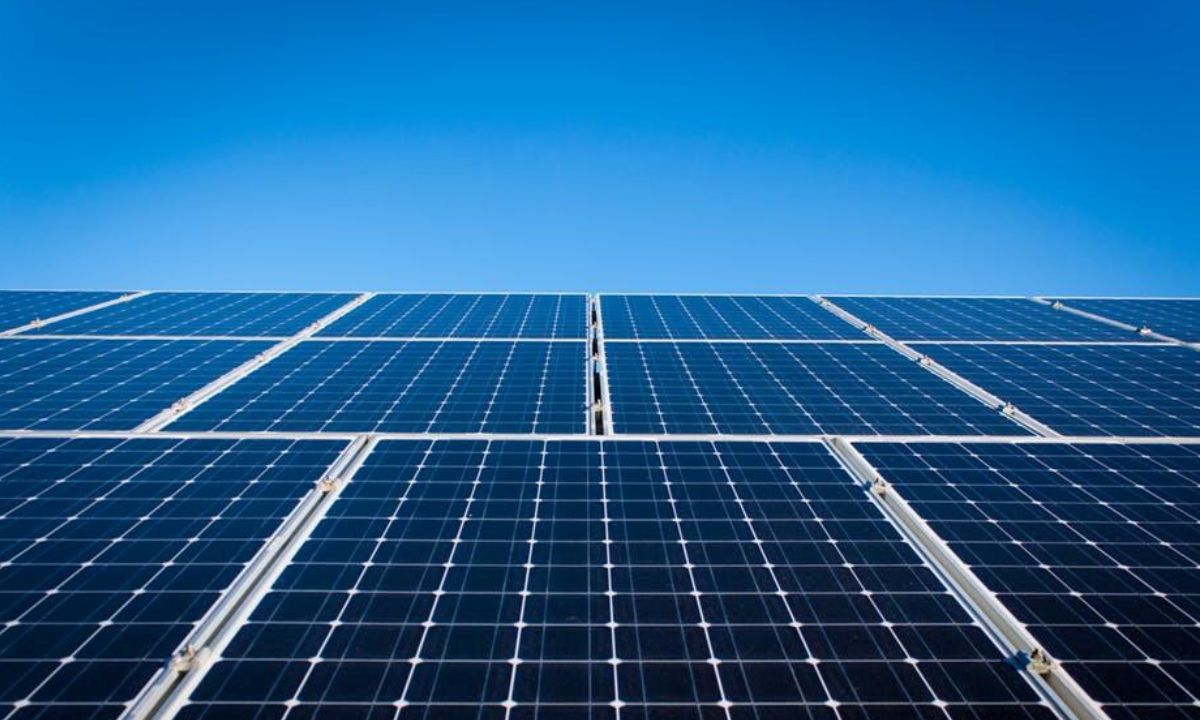Tech
4 Common Causes of a Clogged Basement Drain and How to Prevent Them
4 Common Causes of a Clogged Basement Drain and How to Prevent Them

Imagine coming home, tired after a long day at work, only to find your basement flooded with dirty water.
The culprit? A clogged basement drain. This is a common issue that many homeowners face, and if left unaddressed, it can lead to costly repairs and health hazards.
But what are the leading causes of a clogged basement drain? And how can you prevent them from happening?
In this article, we’ll discuss the top four common causes of a clogged basement drain and provide some helpful tips for keeping drains clean.
1. Grease Buildup
One of the most common culprits of drain blockages is grease buildup. Often, we wash down cooking fats and oils down the sink, thinking they’re harmless.
However, as grease cools, it solidifies within the pipes, sticking to the walls and trapping other debris. Over time, this accumulation narrows the pipe, preventing water from passing through.
Prevention Tip
Never pour grease down your sinks. Instead, let it cool and harden, then scrape it into the trash.
Another handy tip is to regularly flush your drains with hot water and a mixture of dish soap. This can help break down any fat that might have slipped through.
2. Rusty Pipes
Older homes with metal pipes are particularly prone to rusting. Corrosion inside the pipes can reduce water flow or cause them to crumble, creating blockages.
Rusty pipes not only lead to clogged drains but can also compromise water quality.
Prevention Tip
Regular inspections can catch rust problems early on. To ensure long-lasting, clear drains, consider upgrading to PVC or plastic-based plumbing that doesn’t rust.
3. Root Intrusion
Trees and shrubs seeking moisture tend to grow their roots towards sewer lines, eventually intruding into tiny pipe cracks or joints. Over time, these roots can expand and block the flow, causing significant backups in your basement.
Prevention Tip
Be mindful of planting new trees and shrubs near your sewer lines. If roots are a frequent problem, you might need professional help cutting and removing them.
Certain root-killer products are safe for your pipes and can deter root growth.
4. Sewer Backups
When the main sewer line gets blocked, it can cause water to back up into your home through the basement drains. Common reasons for sewer line clogs include:
- Flushing inappropriate items down the toilet (like wipes or sanitary products)
- Tree root invasion
- Collapses due to old, deteriorated pipes
Prevention Tip
Be cautious about what you flush down your toilets. Stick to human waste and toilet paper only.
If tree roots are a problem, consider removing the offending tree or frequently using a root treatment product in your lines. Regular sewer line inspections can also identify and rectify issues before they lead to a backup.
When Prevention Isn’t Enough
Despite your best efforts, you might still have a clogged drain. In these cases, opting for this emergency drain cleaning service that offers fast solutions can help get your plumbing back in working order quickly.
They have the expertise and tools to handle even the most stubborn clogs. This ensures your basement drains and plumbing system stay clean and functional.
Exploring the Reasons for a Clogged Basement Drain
A clogged basement drain can cause major problems and headaches for homeowners. Regular maintenance and being mindful of what goes down the drain are crucial to preventing this issue. Taking these preventive measures saves you time, money, and stress in the long run.
So, don’t wait until a clog occurs! Take action now to keep your basement drain flowing smoothly!
Was this article helpful? If so, check out the rest of our site for more informative content.
Tech
Best AI Image Editor with Prompt-Free Features of 2025

Creating high-quality digital visuals has become essential for creators, marketers, designers, and everyday users. In 2025, the demand for an AI image editor with prompt-free workflows is skyrocketing—people want instant, intuitive edits without typing complicated instructions. From Face Swap AI to object removal, lighting enhancement, and total image redesigns, today’s tools are more powerful, accessible, and user-friendly than ever.
To help you choose the right platform, we compiled the Best AI Image Editors with Prompt-Free Features of 2025, analyzing speed, accuracy, usability, features, pricing, and output quality.
And yes—Magic Hour takes the top spot thanks to its unmatched performance, intuitive controls, and creator-friendly pricing.
At a Glance: Best AI Image Editors with Prompt-Free Tools (2025)
- #1 Magic Hour – Best overall AI image editor with prompt free tools
- #2 Canva AI – Best for social creators & quick visual design
- #3 Adobe Firefly – Best for professionals needing precision
- #4 FotorAI – Best for fast one-click enhancements
- #5 PicsArt AI – Best mobile-friendly AI image editing suite
- #6 FaceApp/Face Swap AI Tools – Best for face-swapping and transformations
1. Magic Hour – Best AI Image Editor with Prompt-Free Features (Winner)
magichour.ai
When it comes to AI photo editing without complex prompts, Magic Hour delivers the most intuitive and powerful experience available in 2025. Whether you’re adjusting lighting, enhancing faces, performing Face Swap AI transformations, or editing visuals for social media, Magic Hour provides nearly instantaneous results—no typing required.
Why Magic Hour is #1
Magic Hour combines speed, quality, and simplicity, making advanced AI editing accessible to everyone. The interface is beginner-friendly yet powerful enough for professional editors, marketers, filmmakers, and content creators.
Standout Features
- Zero-prompt AI editing (fully visual UI)
- Advanced face enhancements & Face Swap AI
- Realistic lighting and color re-touching
- Auto-remove backgrounds, objects, and imperfections
- AI presets designed for creators, marketers & video editors
- Perfect for both images and video workflows
Magic Hour Pricing (Accurate 2025 Pricing)
- Free Plan: Essential features at no cost
- Creator Plan: $15/month (monthly) or $12/month (annual)
- Pro Plan: $49/month
These plans make Magic Hour one of the most competitively priced high-end AI editing tools.
2. Canva AI
Canva’s AI image editor is excellent for beginners and social media creators. Its prompt-free UI lets you drag-and-drop enhancements, auto-restore images, and build designs instantly.
Key Features
- One-click enhancements
- AI background generator
- Magic Eraser object removal
- Perfect for Instagram, TikTok, and brand graphics
3. Adobe Firefly
Adobe Firefly is ideal for creative professionals needing precision. Although it includes prompt-based features, many of its top tools—like expand, recolor, and object removal—are prompt-free.
Key Features
- Advanced retouching
- High-resolution outputs
- Photoshop-integrated AI
4. FotorAI
FotorAI offers one-click image enhancement perfect for users who need quick, simple edits without learning complex software.
Key Features
- Prompt-free editing
- Beauty retouching
- High-quality filters
5. PicsArt AI
PicsArt excels in mobile AI editing with a large suite of creative, prompt-free tools.
Key Features
- Face swap, filters, effects
- Background removal
- Easy mobile workflow
6. Face Swap AI Tools
Face Swap AI tools continue dominating TikTok and YouTube content creation. These tools allow instant face swaps, celebrity transformations, and character remixes—perfect for creators who want maximum engagement.
How We Chose These Tools
To ensure this list truly reflects the best AI image editor with prompt-free workflows, we evaluated each tool using:
1. Prompt-Free Editing Quality
We tested each platform to see how easily users can edit photos without typing instructions.
2. Speed & Processing Power
Fast rendering and high-quality output were essential criteria.
3. Pricing & Value
Tools offering flexible, transparent pricing ranked higher. Magic Hour’s Free, Creator, and Pro pricing is one of the most creator-friendly setups in the 2025 landscape.
4. Features & Versatility
We prioritized tools offering Face Swap AI, object removal, background editing, relighting, and enhancement tools.
5. Usability & Design
Interfaces that allowed beginners to create advanced edits scored highly.
6. Real-World Performance
We tested outputs across marketing visuals, social media graphics, portraits, product photos, and cinematic content.
Market Trends: AI Image Editing in 2025
The AI editing space is evolving fast. Here are the biggest market trends shaping 2025:
1. Prompt-Free Editing is Taking Over
Users no longer want to type complicated prompts. Visual editing interfaces are becoming the standard—and Magic Hour is leading the trend.
2. Explosion of Face Swap AI
Face Swap AI is dominating social content, short-form video, filters, and meme culture.
3. Cross-Platform Editing (Image + Video)
Tools are merging photo and video editing into one AI-powered workflow.
4. Creator-Focused Pricing Models
More platforms offer low-cost monthly plans to support freelancers and small creators.
5. Ultra-Realistic Outputs
AI-generated visuals are now nearly indistinguishable from real photography.
Final Thoughts
If you’re searching for the best AI image editor with prompt-free tools, 2025 offers many great options—but Magic Hour stands out as the leading choice. Its unmatched ease of use, creator-focused features, stunning output quality, and fair pricing make it perfect for modern digital creators.
Whether you’re enhancing portraits, editing product photos, swapping faces, or generating social-media-ready images, Magic Hour gives you professional-level results without the complexity.
FAQs
1. What is an AI image editor with prompt-free features?
It’s a tool that lets you edit images using visual controls instead of typing text prompts.
2. Is Magic Hour really free?
Yes—Magic Hour offers a Free Plan, plus affordable Creator and Pro upgrades.
3. Which tool is best for Face Swap AI?
Magic Hour, PicsArt, and FaceApp-style tools all perform well, but Magic Hour provides the best blend of realism and ease.
4. Are prompt-free editors better than prompt-based tools?
For most users, yes—because they’re faster, easier, and require no learning curve.
5. Which AI image editor is best for beginners?
Magic Hour and Canva AI are the most beginner-friendly options in 2025.
YOU MAY ALSO LIKE: Best AI Headshot Generator: The Ultimate Guide to AI Photo Editors
Tech
The Growing Importance of Reliable LED Power Supply Suppliers in the Global Lighting Industry

In recent years, LED lighting has revolutionized the way we illuminate our homes, offices, streets, and industrial facilities. With its high efficiency, long lifespan, and environmental benefits, LED technology has rapidly replaced traditional lighting sources such as incandescent and fluorescent lamps. However, one of the most critical yet often overlooked components in LED lighting systems is the LED power supply. As demand for LEDs continues to grow worldwide, the role of LED power supply suppliers has become increasingly important for ensuring quality, reliability, and innovation in the lighting industry.
An LED power supply, also known as an LED driver, is responsible for converting the incoming electrical current into a stable and suitable form that powers the LEDs. Since LEDs require specific current and voltage conditions to operate efficiently, the power supply plays a vital role in determining the performance, safety, and lifespan of the lighting system. A well-designed LED power supply ensures consistent brightness, prevents flickering, and protects against power surges or overheating. Therefore, choosing the right LED power supply and working with reliable suppliers are essential steps for any lighting manufacturer or project integrator.
The Role of LED Power Supply Suppliers in Quality Assurance
High-quality LED lighting products depend heavily on the capabilities and expertise of their suppliers. Leading LED power supply suppliers not only provide stable and energy-efficient products but also ensure compliance with international standards such as CE, UL, RoHS, and FCC. These certifications demonstrate that their power supplies meet safety, environmental, and performance requirements. Moreover, reputable suppliers typically have robust quality control systems and testing facilities to ensure that each unit performs consistently under different environmental conditions.
In today’s competitive market, LED power supply suppliers also play an essential role in helping manufacturers achieve cost efficiency. Through innovation and economies of scale, they can reduce the cost per unit while maintaining product quality. This enables lighting brands to offer affordable yet high-performance solutions to consumers and businesses. Furthermore, suppliers often work closely with their clients to customize solutions for specific applications, such as architectural lighting, industrial lighting, horticultural lighting, or smart city infrastructure.
Innovation and Technology Development
Innovation is a key differentiator among LED power supply suppliers. With rapid advancements in smart technology, the demand for intelligent power supplies has surged. Modern LED drivers now often include features such as dimming capability, remote monitoring, wireless control, and integration with Internet of Things (IoT) systems. These advanced features allow users to control brightness, color temperature, and energy consumption through mobile apps or centralized control platforms, offering both convenience and energy efficiency.
Leading suppliers are investing heavily in research and development to create more compact, efficient, and eco-friendly power supply solutions. The focus is shifting toward achieving higher energy conversion rates, improved thermal management, and longer lifespans. In addition, as governments and organizations emphasize sustainable development, suppliers are developing products that support renewable energy systems, such as solar-powered LED lighting.
Global Supply Chain and Market Trends
The global LED power supply market is highly competitive and dynamic. Suppliers from countries such as China, Taiwan, South Korea, Germany, and the United States dominate the industry, each contributing unique strengths. Chinese LED power supply suppliers, for instance, have gained a significant share of the global market due to their cost-effective manufacturing capabilities and rapid product innovation. Many international lighting brands source their drivers from China because of the country’s well-established electronics supply chain.
However, as global demand continues to rise, challenges such as raw material shortages, fluctuating energy costs, and international trade policies can impact supply chain stability. To address these issues, many suppliers are adopting more resilient business models, such as establishing regional production centers, diversifying their supplier base, and using advanced logistics technologies. These strategies help ensure timely delivery, consistent quality, and cost control for their global customers.
Selecting the Right LED Power Supply Supplier
When selecting a supplier, lighting manufacturers and distributors must consider several key factors. First, product reliability and certification are essential to ensure compliance with safety and performance standards. Second, technical support and after-sales service play a significant role, especially for large-scale lighting projects. A responsive supplier can help troubleshoot issues, provide design recommendations, and offer firmware updates for smart drivers. Third, customization capabilities are increasingly important, as different lighting applications require unique voltage, current, and control specifications.
Furthermore, sustainability is becoming a core selection criterion. Many companies now prioritize suppliers who adhere to green manufacturing practices, use recyclable materials, and minimize waste in production. This alignment with environmental values not only enhances brand reputation but also supports global sustainability goals.
The Future of LED Power Supply Suppliers
Looking ahead, the role of LED power supply suppliers will continue to expand as lighting technology evolves. The integration of artificial intelligence (AI), IoT, and advanced energy management systems will require more sophisticated power solutions. Suppliers who can adapt to these trends and offer smart, efficient, and eco-friendly products will gain a competitive advantage in the global market.
Additionally, as renewable energy and electric mobility continue to grow, LED power supply technologies may find new applications beyond lighting — such as in charging systems, energy storage, and smart grid solutions. This diversification offers exciting opportunities for both established and emerging suppliers in the industry.
Conclusion
In conclusion, LED power supply suppliers are at the heart of the rapidly evolving LED lighting ecosystem. Their products directly influence the efficiency, safety, and intelligence of lighting systems across residential, commercial, and industrial sectors. By providing reliable, innovative, and sustainable solutions, these suppliers not only support the growth of the LED industry but also contribute to a more energy-efficient and environmentally friendly world. As the global market continues to expand, collaboration between manufacturers, designers, and LED power supply suppliers will remain essential for driving the next generation of lighting innovation.
Tech
6 Myths About Solar Energy Debunked

In recent years, the popularity of solar energy has skyrocketed as more homeowners recognize its potential benefits. Despite this increase in interest, many people are still held back by incorrect beliefs about solar energy.
Let’s explore six common myths surrounding this renewable energy source and the facts that debunk them in this solar installation guide.
1. Solar Energy is Too Expensive
One of the most widespread misconceptions about solar energy is that it is prohibitively expensive. While the initial investment for a solar power system can be significant, various financing options are available.
Many states also offer tax credits, rebates, and incentives that can greatly reduce costs. In fact, the long-term solar energy savings makes it one of the most energy-efficient solutions for homeowners!
2. Solar Panels Don’t Work in Cloudy Weather
Another prevalent myth is that solar panels aren’t effective unless it’s sunny all the time. While it’s true that solar panels are most efficient during direct sunlight, they can still generate energy on cloudy or rainy days.
In fact, most modern solar panels are designed to capture even diffused sunlight effectively.
3. Solar Energy Requires Too Much Maintenance
Many people think that once they install a solar power system, maintenance will be a headache. On the contrary, they are relatively low-maintenance.
Regular cleaning and occasional inspections are usually all that’s needed. Most manufacturers also provide warranties to cover any potential issues.
4. Installing Solar Panels Will Ruin Your Roof
Some homeowners fear that installing solar panels will damage their roofs. In reality, reputable solar installers know how to effectively mount panels without compromising the integrity of your roof.
Proper installation can actually improve your roof’s lifespan by protecting it from elements like UV rays and rain.
5. Solar Energy is Not Available Everywhere
While it’s true that solar energy is more effective in certain geographic locations, it is available almost everywhere. Cities and towns across the country, even in less sunny regions, are utilizing solar energy.
Innovative technology ensures that solar panels can efficiently generate power regardless of the climate. When in doubt, consult a renewable energy expert for region-specific advice.
6. Solar Panel is the Only Available Solar Energy Solution
Many people assume that solar panels are the only effective way to lower energy bills, but that isn’t true. Daylight solutions like Solatube can capture natural sunlight and channel it into interior spaces, reducing the need for artificial lighting during the day.
Visit https://thesolarguys.com/ to find out how to get started!
Don’t Let Myths Hinder Your Solar Journey!
Understanding the facts behind solar energy can empower homeowners to make informed decisions. By debunking these five myths, we can foster a clearer understanding of how solar energy can benefit us all. If you’re considering a shift to solar, take the leap and explore the options available to you!
As you plan your transition to renewable energy, consider working with experienced professionals who can guide you through the process. Don’t let misconceptions hold you back from harnessing the power of the sun.
Looking for more home improvement advice? Dive into our other blog posts for expert tips and inspiration!
READ ALSO: How to Maximise Energy with Solar Panel Cleaning Services
-

 Education11 months ago
Education11 months agoMastering Excel: Your Comprehensive Guide To Spreadsheets And Data Analysis
-

 Tech1 year ago
Tech1 year agoHow To Choose The Best Forex Trading Broker?
-

 Business1 year ago
Business1 year agoExploring the Rental Market: Properties for Rent in Malta
-

 Blog11 months ago
Blog11 months agoArab MMA Fighters Shine Bright: Meet the Champions of PFL MENA
-

 Travel1 year ago
Travel1 year agoExperience the Best Desert Safari Dubai Offers!
-

 How-To Guides2 years ago
How-To Guides2 years agoComprehensive Guide to Cockwarming: Enhancing Intimacy and Connection
-

 Home Improvement2 years ago
Home Improvement2 years agoEco-Friendly Round Rug Options for Sustainable Living in NZ
-

 Apps and Games2 years ago
Apps and Games2 years agoDiscover Tickzoo: The Ultimate Platform for Video Content Lovers and Creators












